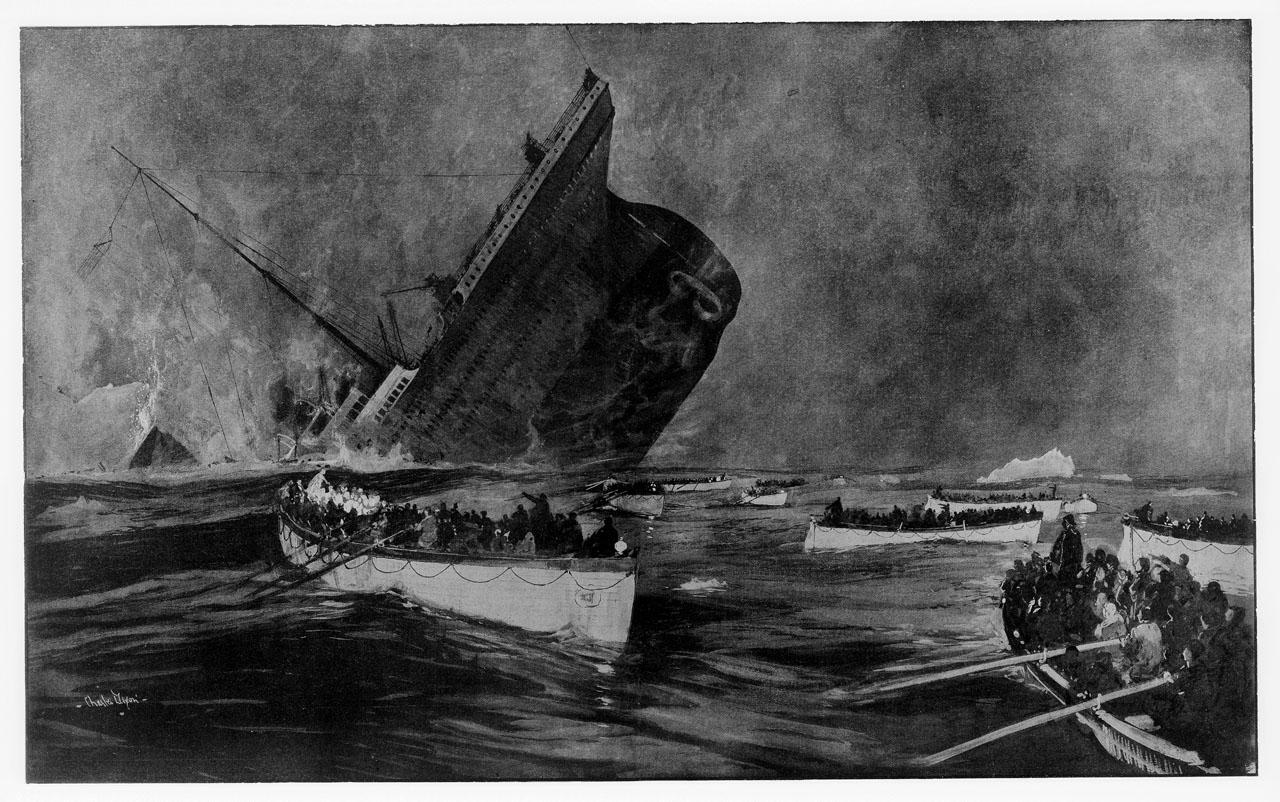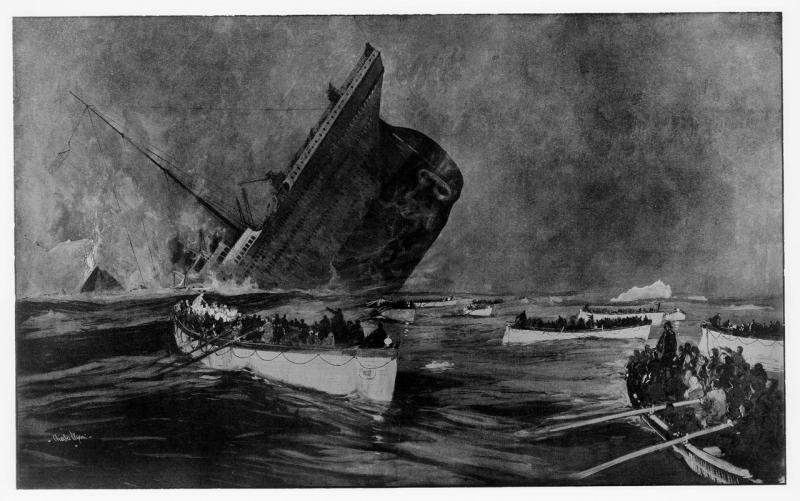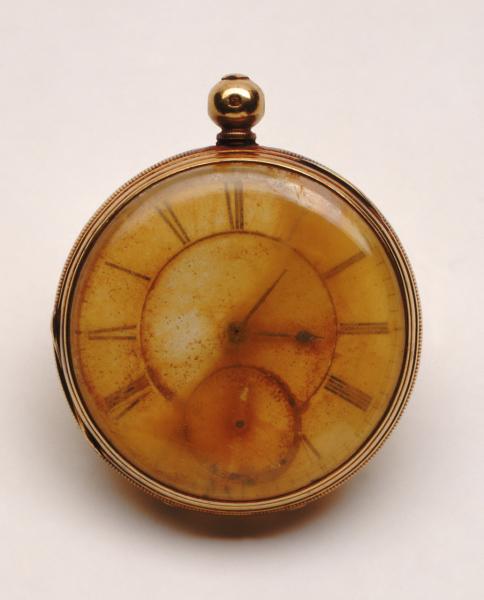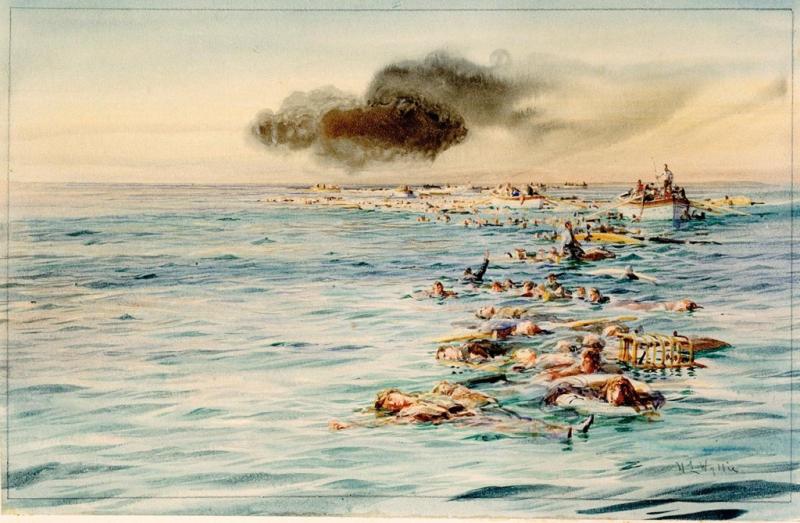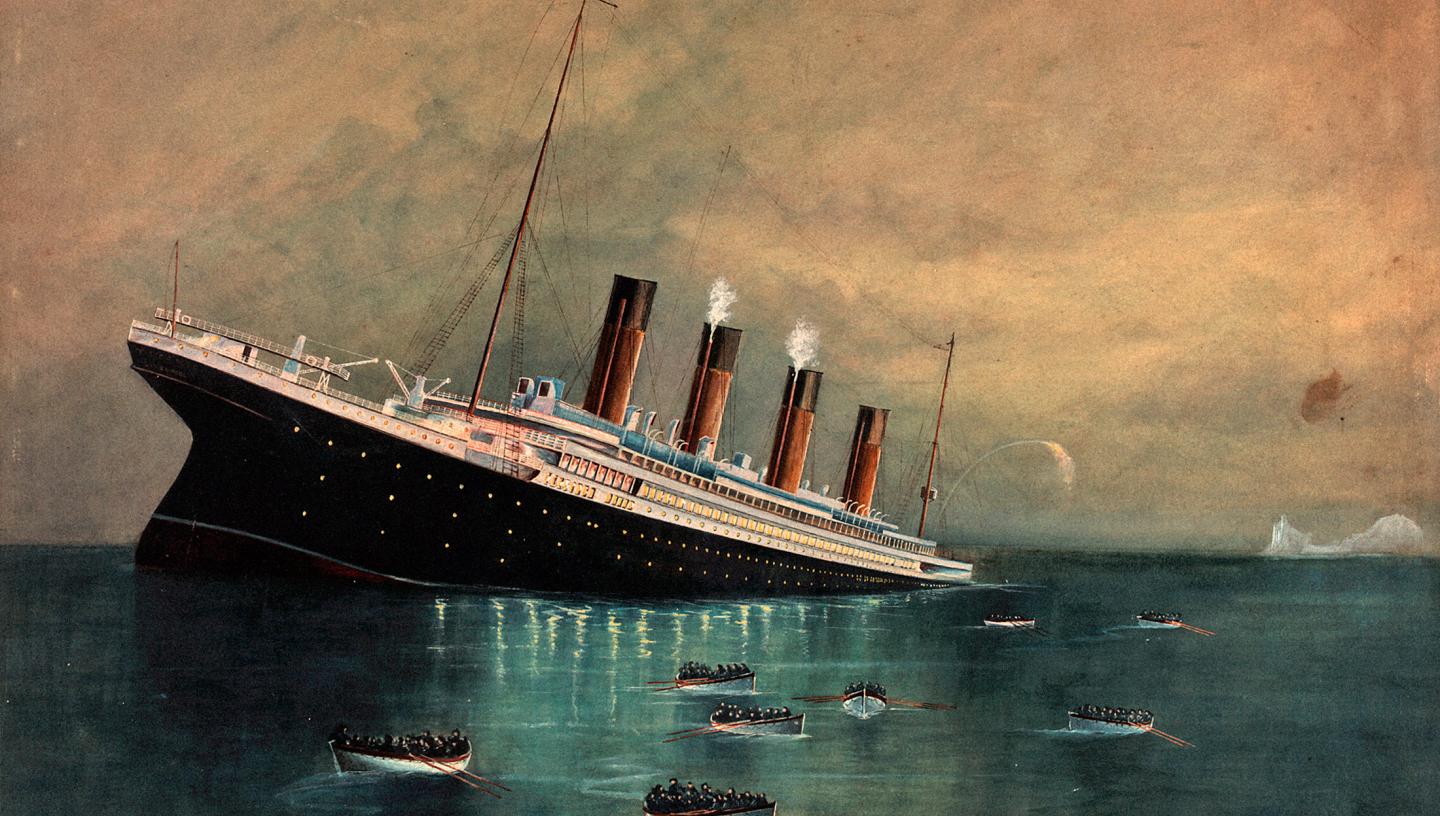
On the night of 14 April 1912, the passenger ship RMS Titanic hit an iceberg in the North Atlantic Ocean during its maiden voyage from Southampton to New York. Approximately 2,200 passengers and crew were on board.
Titanic, operated by White Star Line, was only equipped with 20 lifeboats, designed to hold around 1,178 people – far fewer than the number of passengers on board.
As the ship sank, the crew evacuated passengers under the 'women and children first' protocol. However, because crew were ill-equipped for the eventuality of the ship sinking, amongst the panic many of the lifeboats were launched under capacity.
Approximately 1,500 people died, with many perishing in the freezing cold waters (around -2° Celsius) of the Atlantic Ocean.
RMS Titanic facts
The Titanic was never actually described as ‘unsinkable’
The Titanic was claimed by its builders to be ‘practically unsinkable’. It was a bold claim, but slightly less bold than the ‘unsinkable’ claims that movies have added to the story.
Titanic was at launch the largest object ever to move on the water, but she was not designed to be the fastest (Cunard’s Lusitania and Mauretania were always going to be faster). Stories of the captain trying to make a speed record are without substance.
The Titanic had a swimming pool on board
The accommodation on Titanic was luxurious and spacious. In first class there were many new attractions such as squash courts, a Turkish bath, a gymnasium, a barber shop and also the first swimming pool on board a ship.
Even the cheaper third class cabins were of a better standard than those on other liners. Nevertheless, there were more luxurious and spectacular liners in operation at the time.
The Titanic was designed to be a large-capacity workhorse on a commercially lucrative but competitive route.
The Titanic had two sister ships
RMS Olympic launched in 1910, scrapped in 1935.
HMHS Britannic launched in 1914, sunk by a mine on 21 November 1916.
The Titanic carried post
The reason the Titanic is often referred to as ‘RMS Titanic’ is because the RMS stands for Royal Mail Ship.
There were only enough lifeboats for a third of the people on board
There were 20 lifeboats on board, which would have held a capacity of 1,178 people.
Meanwhile the capacity of Titanic was 3,320 people.
RMS Titanic statistics
The Titanic was a mighty ship indeed, but how did she measure up to the other great liners of her age?
Registered dimensions:
- Length: 852.5 feet
- Length overall: 882.75 feet
- Breadth: 92.5 feet
- Depth: 59.6 feet
- Tonnage: Gross 46,329, Net 21,831
Number of decks
10
Engines
- 2 triple-expansion 8 cylinder engines and 1 low pressure turbine
- Registered horsepower: 6906
- Total horsepower: 46,000
- Service speed: 21 knots
- Estimated top speed: 23/24 knots
Passenger capacity
- First class: 735
- Second class: 674
- Third class: 1026
- Crew: 885
Losses
Approximately 1500 people; estimated 815 passengers and 688 crew
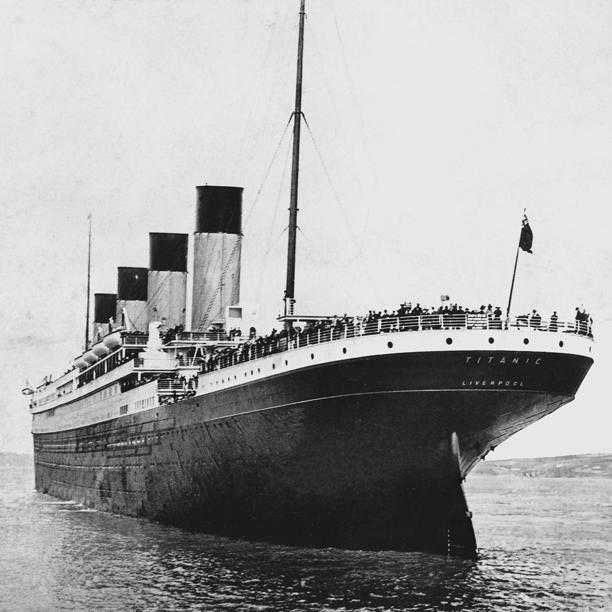
RMS Titanic timeline
31 March 1909: Laid down
31 May 1911: Launched
31 March 1912: Completed
2 April 1912: Sea trials (Belfast Lough and the Irish Sea)
10 April 1912 - 12.15: Set sail from Southampton on her maiden voyage to New York via Cherbourg, France and Queenstown, Ireland
10 April 1912 - 18.35: Arrived Cherbourg
10 April 1912 - 20.10: Sailed from Cherbourg
11 April 1912 - 11.30: Arrived Queenstown
11 April 1912 - 13.30: Sailed from Queenstown
14 April 1912 - 09.00: First ice warning, received from Caronia
14 April 1912 - 23.40: Collision with iceberg
15 April 1912 - 00.45: Wireless call for assistance, first transmission, using code CQD. Transmission altered to the new code SOS, first use of this code by a passenger liner.
15 April 1912 - 02.10: Last transmission
15 April 1912 - 02.20: Titanic foundered
15 April 1912 - 04.10: First lifeboat picked up by Carpathia
18 April 1912: Carpathia docked in New York
1 September 1985: Titanic wreck site located, approximately 2.5 miles below the Atlantic, by a joint French/USA expedition

Visit the National Maritime Museum
Header image: Painting by W. Pearson (PAH5224)
